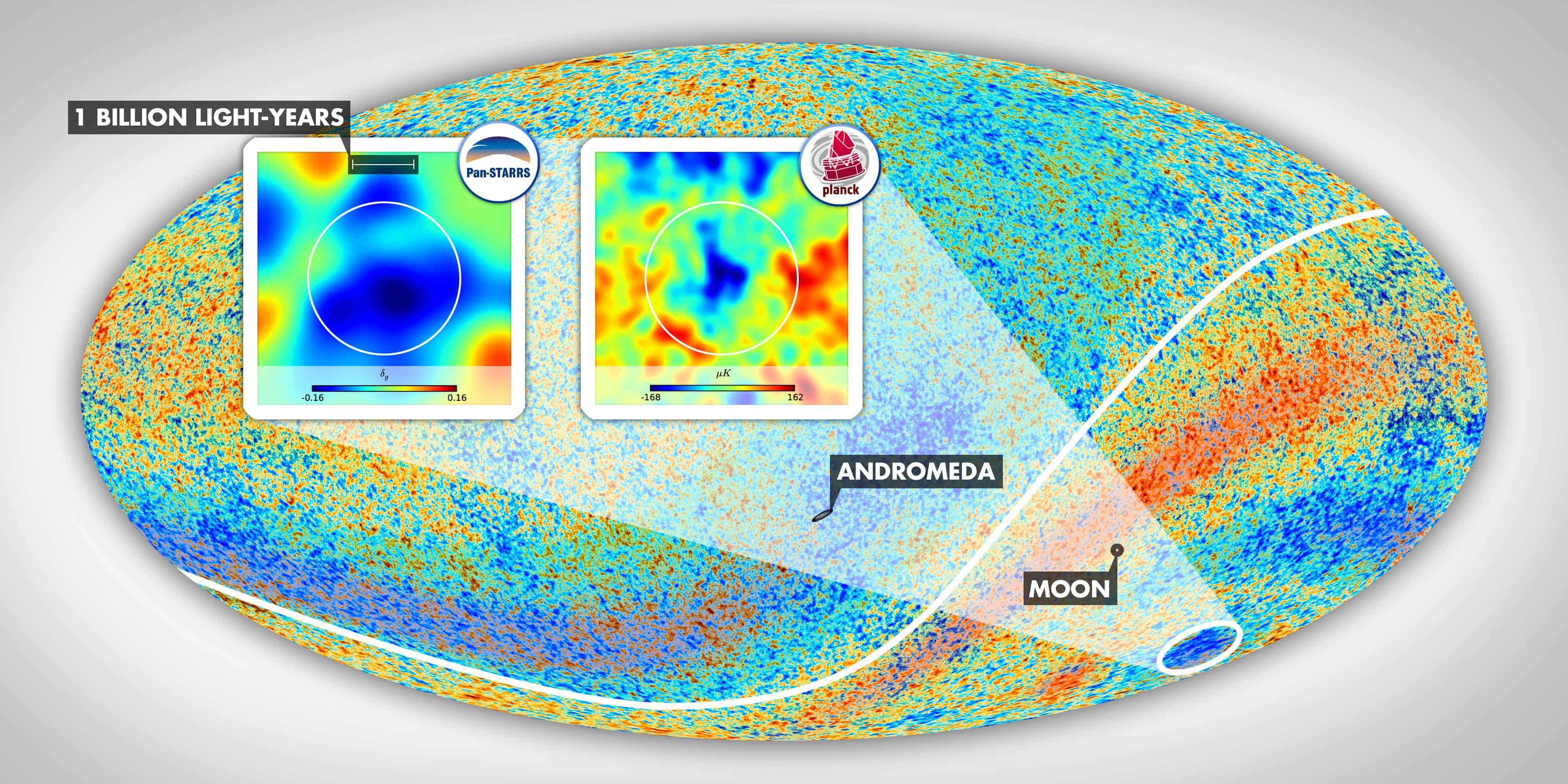
By James Dacey
Astronomers believe they may finally be able to explain the origin of the “cold spot”, a glaringly large cool region in the cosmic microwave background (CMB). Maps of the CMB, such as that created by the Wilkinson Microwave Anisotropy Probe (WMAP) and more recently by the Planck mission, reveal the distribution of radiation left over after the Big Bang. When in 2004 researchers noticed this cold spot on the map, they soon realized it was either a sign of exotic physics linked to the Big Bang itself or it was caused by some sort of structure in the foreground between the CMB and the Earth.
The case has now received a significant lead thanks to the investigations of a team led by István Szapudi of the University of Hawaii at Manao. Using data from Hawaii’s Pan-STARRS1 (PS1) telescope and NASA’s Wield Field Survey Explorer (WISE) satellite, the astronomers have identified a “supervoid” 1.8 billion light-years across in which the density of galaxies is much lower than elsewhere in the studied universe.
Part of the reason why nobody has been able to pin down the nature of the cold spot is that it can be difficult to characterize large cosmic structures that are relatively close to us because of the large portions of the sky that must be mapped. By combining optical observations captured by PS1 with infrared data acquired by WISE, Szapudi and his team were able to determine the distances and positions of each galaxy in that section of the sky. It turns out that the void is a mere 3 billion light-years away, relatively close by cosmic standards.
Of course, just as the presence of a suspect at the scene of a crime does not necessarily equate to guilt, the existence of this supervoid in the line of site of the cold spot does not necessarily tell the full story. What’s more, there are deeper questions as to why the supervoid and the cold spot exist in the first place. Szapudi and his team say that the observations so far are consistent with a fluctuation in a Gaussian distribution of the Λ cold-dark-matter model, publishing their findings in the Monthly Notices of the Royal Astronomical Society.
The case, it seems, has just got more juicy.



